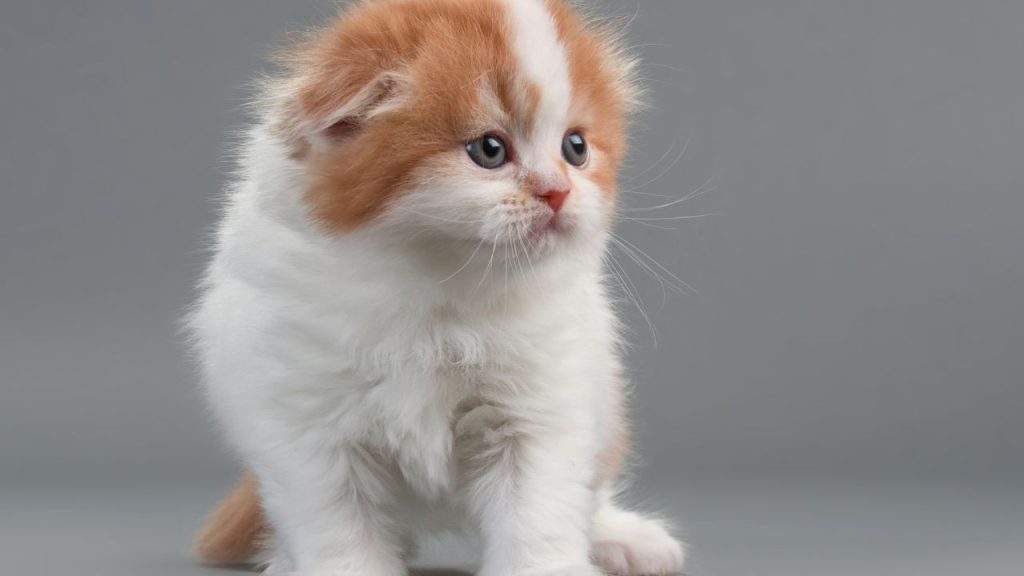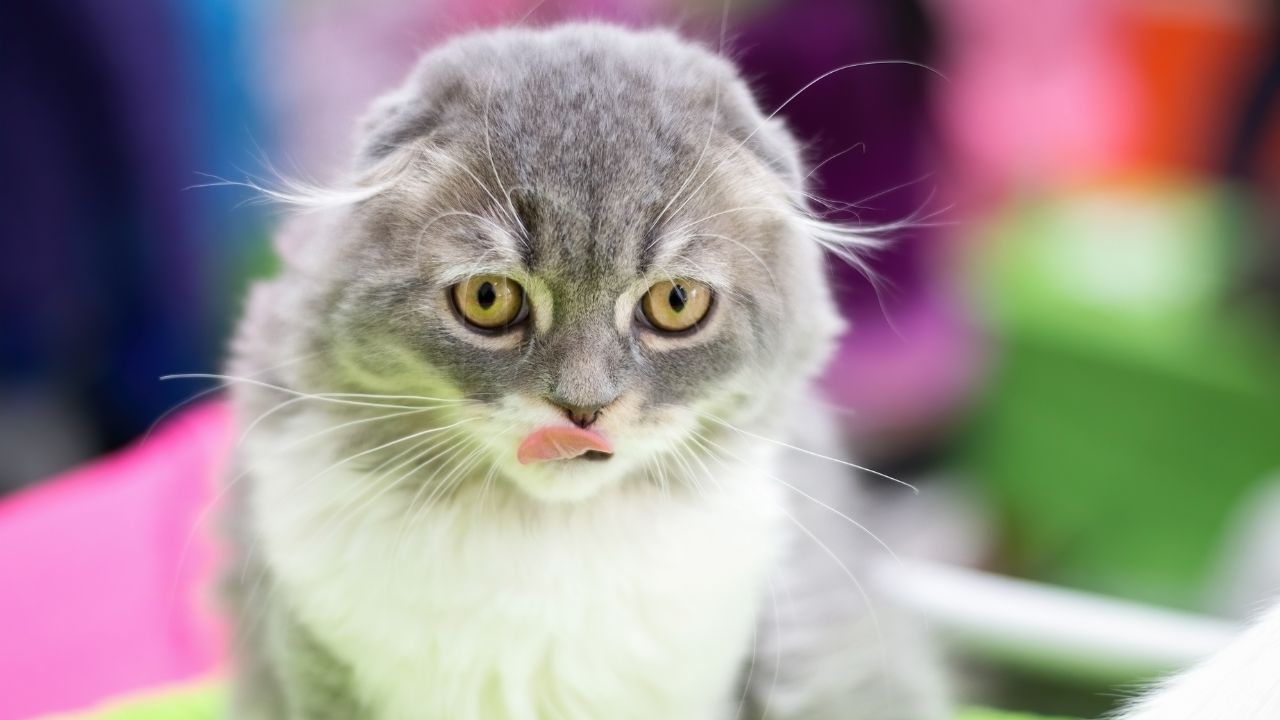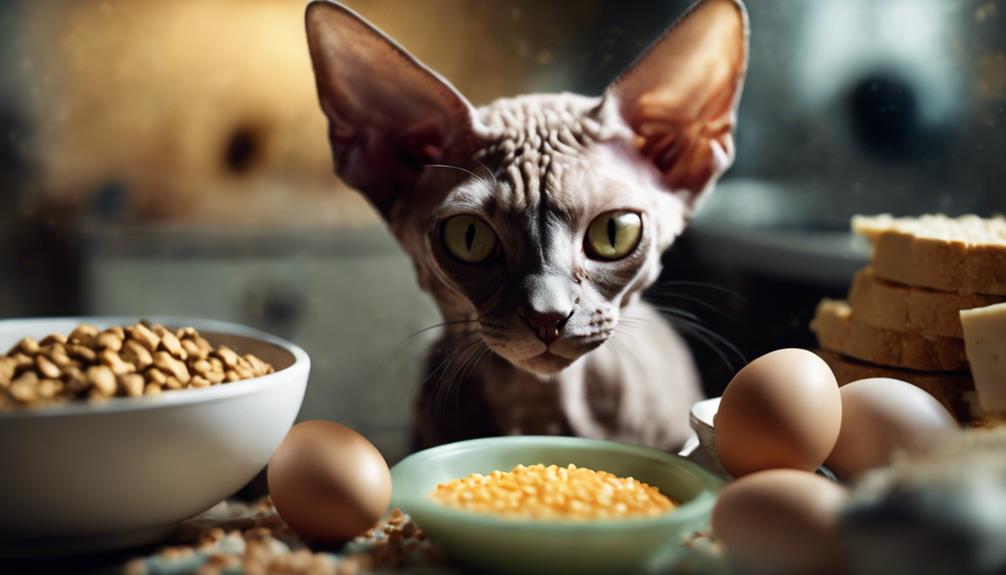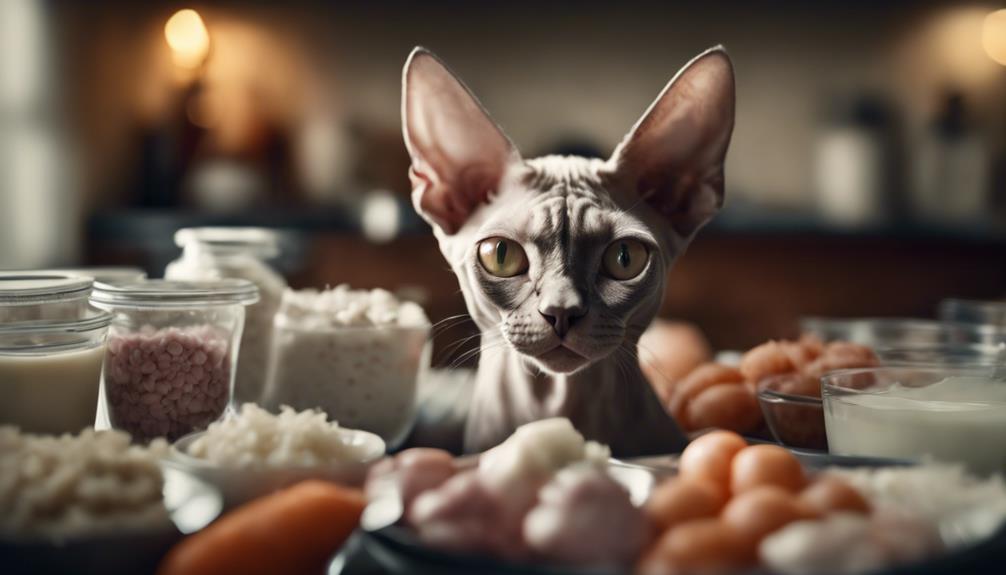Cats are one of the most beloved pets around the world, and their unique physical features make them even more adorable. One of the most distinctive features of cats is their ears, which come in different shapes and sizes. While most cats have ears that stand upright or slightly tilt forward, some breeds have ears that fold down, creating an even more unique appearance.
However, some people may wonder if there is a breed of cat with no ears at all. The answer is no, there is no breed of cat that is naturally born without ears. All cats have ears, although some breeds may have smaller or more unusual-looking ears than others. In fact, there are only a few breeds of cats that have folded ears, such as Scottish Folds, American Curls, and Highlanders.
What is a Scottish Fold cat?
The Scottish Fold is a breed of domestic cat that is known for its unique physical characteristic of having folded ears. This trait is caused by a genetic mutation that affects cartilage throughout the body, causing the ears to bend forward and down towards the front of the head. This gives the cat what is often described as an “owl-like” appearance.
Scottish Fold cats are medium-sized cats with medium-sized boning. They have a round head, and the folded ears heighten that illusion of roundness. The eyes are very round, bright, and clear. The legs appear round, as does the tail in comparison to its length. The short coat is easy to care for.
Scottish Fold cats are known for their laid-back and affectionate personalities. They are often described as being very loyal and devoted to their owners. They are also known for their intelligence and are said to be very trainable.
The breed originated in Scotland in the 1960s when a white barn cat with folded ears was discovered on a farm. The cat was bred with other cats, and the Scottish Fold breed was born.
Due to the genetic mutation that causes the folded ears, it is important to breed Scottish Fold cats responsibly. Breeding a heterozygous Scottish Fold with another heterozygous Scottish Fold can result in a litter of kittens with severe health problems. Therefore, responsible breeders will breed a Scottish Fold with a straight-eared cat to ensure that none of the litter receives two copies of the gene.
In conclusion, the Scottish Fold is a unique and beloved breed of cat known for its folded ears and affectionate personality. However, it is important to breed them responsibly to ensure the health and well-being of the cats.
The Characteristics of Scottish Fold Cats
Scottish Fold cats are a popular breed known for their unique appearance and affectionate personalities. In this section, we will explore the physical characteristics, temperament and personality, health, and care of Scottish Fold cats.
Physical Characteristics
Scottish Fold cats are medium to large-sized cats with a rounded body structure and large, round eyes. They come in a variety of colors, including white, blue, cream, red, silver, cameo, brown, blue cream, tortoiseshell, and black. The most distinctive feature of the Scottish Fold is its folded ears, which give the cat a unique and adorable appearance.
The Scottish Fold’s ears are a result of a genetic mutation that affects the cartilage and bone in the ear. The mutation causes the ear to fold forward and downward, giving the cat a rounded head and face. While not all Scottish Fold cats have folded ears, those that do are highly prized for their unique appearance.
Temperament and Personality
Scottish Fold cats are known for their affectionate and loyal personalities. They are generally quiet cats that enjoy spending time with their families and are great with children. Scottish Folds are moderately active cats that enjoy playtime, but are also happy to curl up on the couch with their owners.
Health and Care
Like all cats, Scottish Folds are prone to certain health issues. Ear infections are a common problem in Scottish Folds due to their folded ears, which can trap moisture and debris. Mites and other infections can also be a problem in the ears of Scottish Folds. Regular ear cleaning and check-ups with a veterinarian can help prevent these issues.
Scottish Folds are also prone to arthritis and other joint problems, especially as they age. Owners should provide their Scottish Folds with a comfortable and supportive bed and ensure that they get regular exercise to help keep their joints healthy.
In terms of grooming, Scottish Folds have moderate grooming needs due to their short, dense coat. Regular brushing and occasional bathing can help keep their coat healthy and shiny. Scottish Folds are also prone to hairballs, so owners should provide them with plenty of opportunities to groom themselves and provide them with hairball remedies as needed.
Overall, Scottish Fold cats are a unique and lovable breed that make great pets for families and individuals alike. With proper care and attention, Scottish Folds can live long and healthy lives, bringing joy and companionship to their owners.
The History of the Scottish Fold Breed
The Scottish Fold breed of cat originated in Scotland, specifically in the region of Perthshire. The breed’s founder was a white barn cat named Susie, who was discovered in 1961 by a local shepherd. Susie had a unique genetic mutation that caused her ears to fold forward and down, giving her a distinctive appearance.
Susie’s owner, William Ross, began breeding her with other cats to develop the Scottish Fold breed. The breed’s name was originally “lop-eared,” but it was changed to Scottish Fold in 1966. Depending on the registry, long-haired Scottish Folds may be known as Highland Fold, Scottish Fold Longhair, Longhair Fold, or Coupari.
The Scottish Fold breed quickly gained popularity due to its unique appearance and charming personality. However, breeding the Scottish Fold can be challenging due to the genetic mutation that causes the ears to fold. Folded-ear cats should not be bred with other folded-ear cats, as this can result in impaired kittens that may have difficulty walking.
To maintain the breed’s health and genetic diversity, allowable outcrosses for Scottish Folds include straight-eared cats, as well as American Shorthairs and British Shorthairs. This careful breeding has helped preserve the Scottish Fold breed and ensure that it remains a healthy and beloved cat breed.

The Genetic Mutation Behind Scottish Fold Cats
Scottish Fold cats are a unique breed known for their distinctive folded ears. This trait is the result of a genetic mutation that affects the cat’s cartilage throughout the body, including the ears. The mutation causes the ears to bend forward and down towards the front of the head, giving the cat an “owl-like” appearance.
The gene mutation responsible for the Scottish Fold’s folded ears is a dominant gene mutation. This means that if a cat inherits the gene from just one parent, it will display the trait. Cats that are homozygous for the gene mutation, meaning they inherit it from both parents, often have more severe ear folding and may develop health issues related to cartilage and bone development.
However, cats that are heterozygous for the gene mutation, meaning they inherit it from only one parent, may also have folded ears but are less likely to develop health problems. These cats can still pass on the gene mutation to their offspring, with a 50% chance that their offspring will also have folded ears.
One of the health issues associated with the Scottish Fold’s gene mutation is osteochondrodysplasia, which affects the development of cartilage and bone. This condition can cause pain and debilitation in affected cats. Many veterinarians oppose breeding Scottish Folds due to the risk of this condition.
In conclusion, the distinctive folded ears of Scottish Fold cats are the result of a dominant gene mutation affecting cartilage throughout the body. While this trait is unique and visually appealing, it can also lead to health issues in some cats. It is important for breeders and owners to be aware of these potential issues and take steps to ensure the health and well-being of their cats.
The Debate Around Scottish Fold Cats
Scottish Fold cats are a popular breed known for their folded ears. However, this unique trait has sparked a debate among cat lovers and veterinarians. The controversy revolves around the potential health issues that may arise from breeding cats with folded ears.
The Scottish Fold breed was first discovered in Scotland in 1961, and it quickly gained popularity due to its adorable appearance. However, the breed’s popularity has also led to concerns about the welfare of these cats. The British Veterinary Association has warned that breeding Scottish Folds should stop due to the potential for health problems.
The gene responsible for the folded ears is a dominant gene, which means that if a cat inherits the gene from one of its parents, it will have folded ears. However, the gene also affects the cartilage throughout the cat’s body, which can lead to health issues such as arthritis and joint pain. Additionally, cats with folded ears may be more prone to ear infections due to the way their ears fold.
The Governing Council of the Cat Fancy, the organization that oversees cat breeds in the UK, has not banned Scottish Folds but has placed restrictions on breeding them. The organization requires breeders to have their cats’ ears checked regularly for signs of health issues and to only breed cats with healthy ears.
Other cat breeds, such as British Shorthairs and Highlander cats, also have folded ear mutations, but they are not as pronounced as in Scottish Folds. Calico cats can also have folded ears, but it is a rare occurrence.
In conclusion, while Scottish Fold cats are undeniably cute and endearing, it is important to consider the potential health issues that may arise from breeding cats with folded ears. The debate around Scottish Folds highlights the importance of responsible breeding practices and the welfare of animals.
Conclusion
In conclusion, there is no breed of cat with no ears. However, there are some cat breeds with short ears, such as the Scottish Fold, American Curl, Highlander, and Ukrainian Levkoy. These breeds have unique ear characteristics that make them stand out from other breeds.
The Scottish Fold, for instance, has ears that fold forward and downward, giving them a unique appearance that resembles an owl. However, not all Scottish Fold kittens are born with folded ears, and some may never develop them. On the other hand, the American Curl has ears that curl backward, and the Highlander has ears that curl slightly forward and upward.
It is worth noting that these ear characteristics are a result of selective breeding, which has raised concerns about the health and well-being of these breeds. Some breeders have faced criticism for breeding cats with genetic mutations that can cause health problems, such as joint issues and ear infections.
Overall, while there is no breed of cat with no ears, there are several breeds with unique ear characteristics that make them stand out. However, it is essential to consider the potential health risks associated with selective breeding and to ensure that cats are bred responsibly and ethically.




